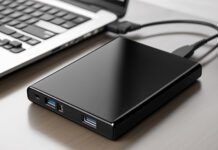This feature originally appeared on TFWM.com, Technologies for Worship Magazine, the one-stop resource for house of worship technicians, volunteers and leaders alike. Learn about mixing fundamentals, video formats, mic’ing strategies, camera use, lighting techniques…it’s all here. Find us on Facebook at: http://www.facebook.com/ TechnologiesForWorshipMagazine and on Twitter: @tfwm.
Pitfalls to Avoid and Best Practices
Houses of worship are embracing the use of streaming video to expand the reach of their ministries. Video on the Web and mobile devices allow churches to reach congregants unable to attend sermons in person.
While on-demand video is an important element for faith-based websites, live video streaming adds the element of immediacy that can deepen the connection between you and your viewers. Live streaming can also be used to connect multisite church organizations, enabling live sermons to be delivered across multiple gathering locations.
Live streaming, however, has more technical considerations that you must plan for to be successful. While advances in streaming technology and recent encoding solutions have made Web streaming easier and more accessible to houses of worship than ever before, there are some common misconceptions and mistakes that those implementing streaming for the first time often discover too late. This article highlights a few of the potential pitfalls, with advice on how to avoid them.
REVIEWING THE BASICS
Before delving into these pitfalls, it’s useful to review the basics of a streaming workflow. At a simplified level, there are four key steps in a typical streaming setup, with the content following a linear flow: VIDEO SOURCE –> STREAMING ENCODER –> STREAMING DISTRIBUTION SERVER OR SERVICE –> VIEWER
The encoder transforms the source video signal into Web-friendly (or mobile- friendly) data streams. This transformation involves compression (to “squeeze” the video and audio signals down to a data rate that can be streamed over network connections) and “wrapping” the compressed video and audio into a format and protocol used to transport the content. The church can decide what bit rate (data rate) the video streams will be compressed down to. Essentially, a larger bit rate enables higher video quality, but requires higher Internet bandwidth for both the church and viewers.
The resulting stream is sent from the encoder to a distribution (streaming) server or external service (Content Delivery Network, CDN), from which the content is delivered to viewers. (Note that in the case of a single stream being sent from an origin site to one remote campus, a direct connection may be possible, with no server or CDN required at all). In a typical situation with multiple viewers or destination sites, there is generally not any “direct” connection between the viewer and the encoder – they connect only to the distribution server or CDN. Viewers access the live content through a video player embedded in a web page or on their mobile device.
PITFALL #1 – LOW-QUALITY VIDEO SOURCE
A fairly common misconception is that if you’re just creating a small, low-bitrate output for the Web or mobile phones, you can get away with using a lower-quality source signal. In fact, the opposite is true- low-quality sources have a lot of video noise, etc. that makes the video harder to compress, and you’re wasting bits compressing the junk in addition to the content. In a low bit rate output, those wasted bits are a higher percentage of the total, so you can end up with a LOT lower quality output than if the source had been “clean”.
You should always use the best quality signal possible, starting at the camera itself – lower-end cameras can introduce noise into the video signal, and lighting is also a big factor in compression quality. Video shot in low light has considerably more video noise than well-lit video; low-light video that looks OK on a monitor connected directly to the camera can look considerably worse once compressed for streaming. For connectivity, SDI digital signals are ideal. For analog video, component signals are the best, followed by Y/C (S-Video) and composite. The best encoding systems have video processing capabilities that can do a lot to help “clean up” the less-than-ideal video sources to create a goodquality output – but fantastic quality starts with a good source.
PITFALL #2 – HIGHER RESOLUTION CAN RESULT IN LOWER QUALITY
There’s a trade-off between visual quality and your choices of resolution and bit rate. A common mistake is to decide to stream at higher resolution (frame size) with the expectation that it will provide better quality. The problem is that a larger size requires more compression to achieve a specific bitrate; so the resulting visual quality may be much lower than smaller sizes at the same bitrate. Streaming at a lower resolution can actually give better quality than streaming at higher resolution at the same bit rate.
If you want to increase your resolution, you may need to use a higher bit rate to accommodate it.












